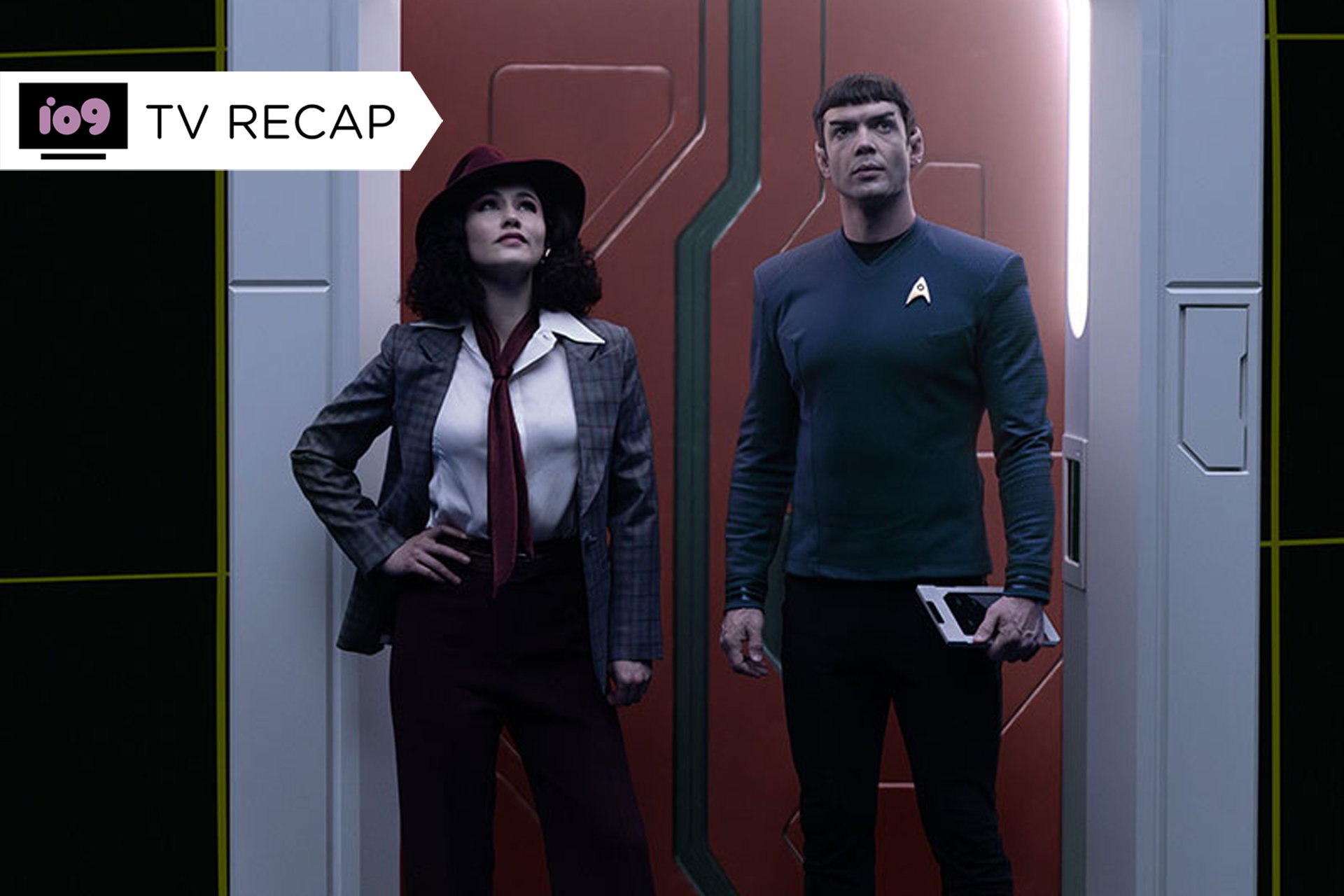Star Trek: Strange New Worlds often embraces its meta-textual nature, but its latest episode, “A Space Adventure Hour,” ventures too deep into self-referential territory, overshadowing an otherwise promising murder mystery narrative. This installment, while rich in homage, struggles to balance its love for the franchise’s past with the demands of its own compelling storyline, ultimately leading to a disjointed viewing experience that prioritizes commentary over coherent plot.
The episode unfolds as a holodeck adventure, a classic Star Trek trope, despite its anachronistic setting a century before widespread holodeck technology was common. The narrative ingeniously attempts to justify this by framing it as an experimental system, with La’an leading the test due to her holographic combat simulator experience. This clever setup, including subtle nods to future Starfleet tech, aims to bridge the historical gap, yet ultimately serves as a flimsy pretext for deploying a familiar and often overused plot device within this sci-fi television series.
La’an’s mission involves testing the holodeck’s power consumption while the USS Enterprise investigates a dying neutron star. Her chosen simulation is a 1960s murder mystery, populated with holographic versions of her crewmates. As expected from a holodeck episode, safety protocols inevitably fail, trapping her in a high-stakes scenario where she must solve the mystery to survive. This premise, while archetypal, initially sets the stage for potential intrigue and character exploration within the confines of the simulation, promising a fun whodunit.
While “A Space Adventure Hour” competently rehashes elements from iconic holodeck stories like “The Big Goodbye” and Voyager’s “The Killing Game,” it struggles to innovate. The episode hits expected beats, allowing the cast to explore diverse roles, but it largely mimics its predecessors rather than building upon them. This lack of fresh perspective ultimately makes the mystery feel procedural, lacking the compelling twists that distinguish truly memorable Star Trek narratives, leading to a rather anticlimactic resolution.
However, the episode’s true ambition lies not in its murder mystery, but in its overt meta-narrative. ‘A Space Adventure Hour’ quickly becomes a thinly veiled eulogy for the original Star Trek series, portraying it as a groundbreaking show that defied cancellation and reshaped television. This message, delivered with surprising directness, even amidst Paramount’s recent decision to shorten another series, becomes the episode’s dominant theme, often eclipsing its primary plot and the very murder mystery it sets up.
Rather than direct exposition, the show conveys its reverence through the fictional 1960s series ‘Space Adventure Hour,’ the cancellation of which sparks the holodeck’s central murder. Characters like T.K. Bellows (a Gene Roddenberry analogue), Sunny Lupino (inspired by Lucille Ball), and Maxwell Saint (a William Shatner caricature) embody archetypes passionately defending the show’s societal value. Their motivations are deeply tied to ‘Space Adventure Hour’s’ perceived importance, blurring the lines between the fictional show and its real-world inspiration, the enduring Star Trek legacy.
Despite its earnest message, the portrayal of ‘Space Adventure Hour’ as a parody of the original Star Trek is ironically less loving than critical. The faux-show features noticeably cheaper sets and clunky, over-the-top acting, making it appear inferior to classic Trek. This contrast creates an odd dissonance: the episode extols the virtues of the original while simultaneously depicting a deliberately subpar homage. This choice, intended perhaps as satire, ultimately undermines the very reverence it attempts to convey, making the show seem to laugh at its legacy rather than with it, a peculiar choice for an episode so dedicated to praise.
In its haste to conclude the primary narrative, ‘A Space Adventure Hour’ introduces a jarring ‘twist’ that feels unearned. The resolution to La’an’s murder mystery is hastily revealed as a misdirection, with a holographic Spock inexplicably implicated. This sudden, poorly integrated reveal, devoid of proper setup, feels like a contrived means to wrap the plot, highlighting the episode’s struggle to balance its meta-commentary with its actual storyline. The focus on praising classic Trek ultimately sacrifices narrative cohesion and a satisfying conclusion.
Ultimately, while Star Trek: Strange New Worlds typically excels at balancing homage with originality, ‘A Space Adventure Hour’ stumbles by prioritizing its self-referential message over narrative integrity. The episode’s eagerness to celebrate its heritage, while understandable, leads to a disjointed viewing experience where a compelling premise is overshadowed by an overzealous meta-commentary. This installment serves as a reminder that even the most beloved franchises must find a delicate balance between honoring their past and charting a fresh course for the future, particularly in a TV series analysis.






Leave a Reply